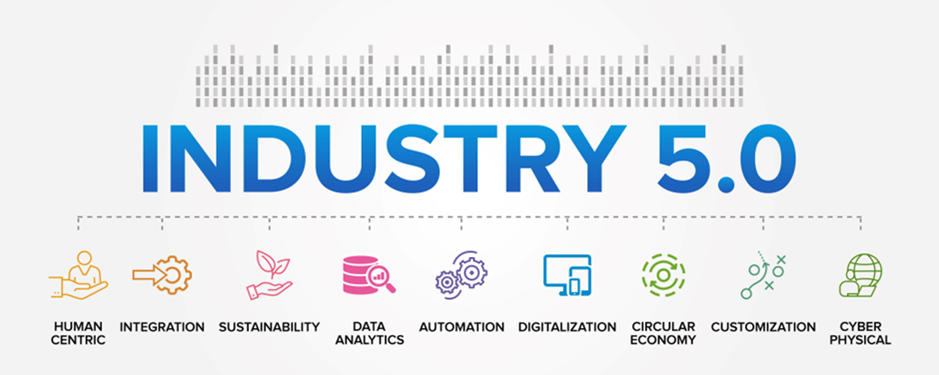
How Close Are We to Industry 5.0?
Industry 5.0 is gaining traction and evolving, although its implementation and widespread adoption vary by region, industry, and organizational readiness. Industry 5.0 is not a fixed point to reach but a continuous evolution that builds upon the digital transformation initiated by Industry 4.0. It emphasizes the reintegration of human intuition, creativity, and values into the manufacturing process, complemented by advanced technologies such as AI (Artificial Intelligence), robotics, the IoT (Internet of Things), and more.

The key characteristics of Industry 5.0 include:
- Human-Centric Approach: Unlike Industry 4.0, which focuses on automation and efficiency, Industry 5.0 prioritizes the collaboration between humans and machines, aiming to leverage the strengths of both.
- Sustainability: There’s a strong focus on sustainable production processes that minimize environmental impact and ensure social responsibility.
- Customization and Personalization: It emphasizes the ability to produce highly customized and personalized products at scale, meeting individual customer needs.
Progress Towards Industry 5.0
The progression toward Industry 5.0 has already started:
- Technological Advancements: Many of the technological foundations necessary for Industry 5.0 are already in place or rapidly advancing. AI, robotics, and IoT technologies are becoming more sophisticated, affordable, and accessible.
- Pilot Projects and Initiatives: Across the globe, there are increasing instances of pilot projects and initiatives that embody the principles of Industry 5.0, particularly in advanced manufacturing hubs in Europe, Asia, and North America.
- Policy and Framework Development: Several governments and international bodies are beginning to develop policies and frameworks to support the transition to Industry 5.0, focusing on innovation, sustainability, and workforce development.
Conclusion
The idea of Industry 5.0 is slowly becoming a reality through technological advancements and changes in societal and business values. However, the rate of adoption is not uniform across different sectors and regions. The transition is a complicated process that includes not only technological upgrades but also cultural and organizational changes. Considering the ongoing developments and the nature of such transitions, it is reasonable to expect that Industry 5.0 will become more prominent and integrated into the mainstream over the next decade. Nevertheless, the complete realization of Industry 5.0’s potential will likely be a gradual process, characterized by continuous innovation and adaptation.
